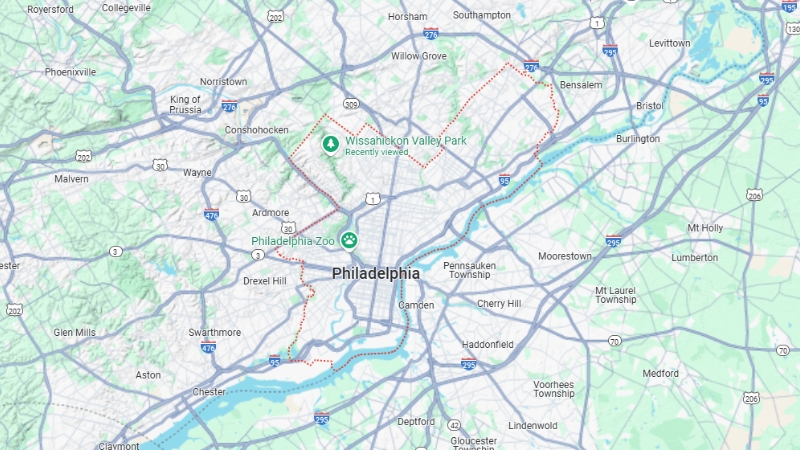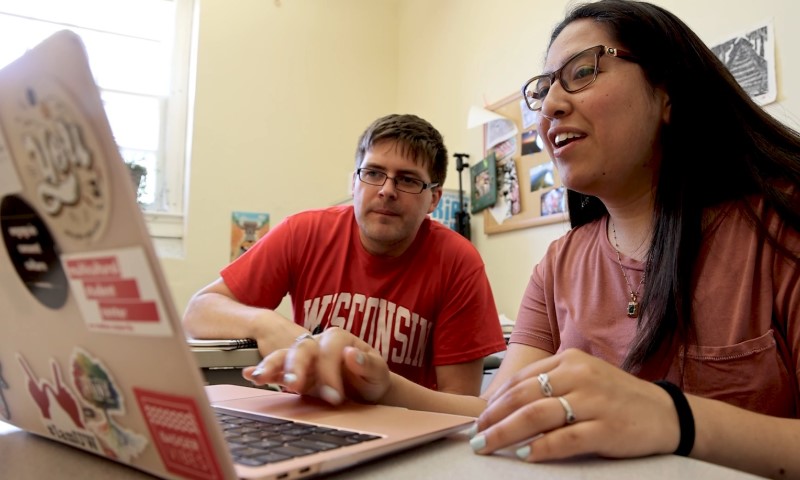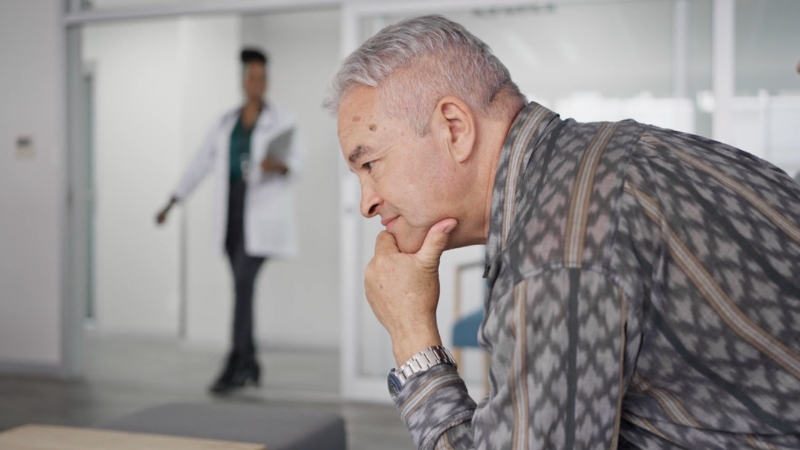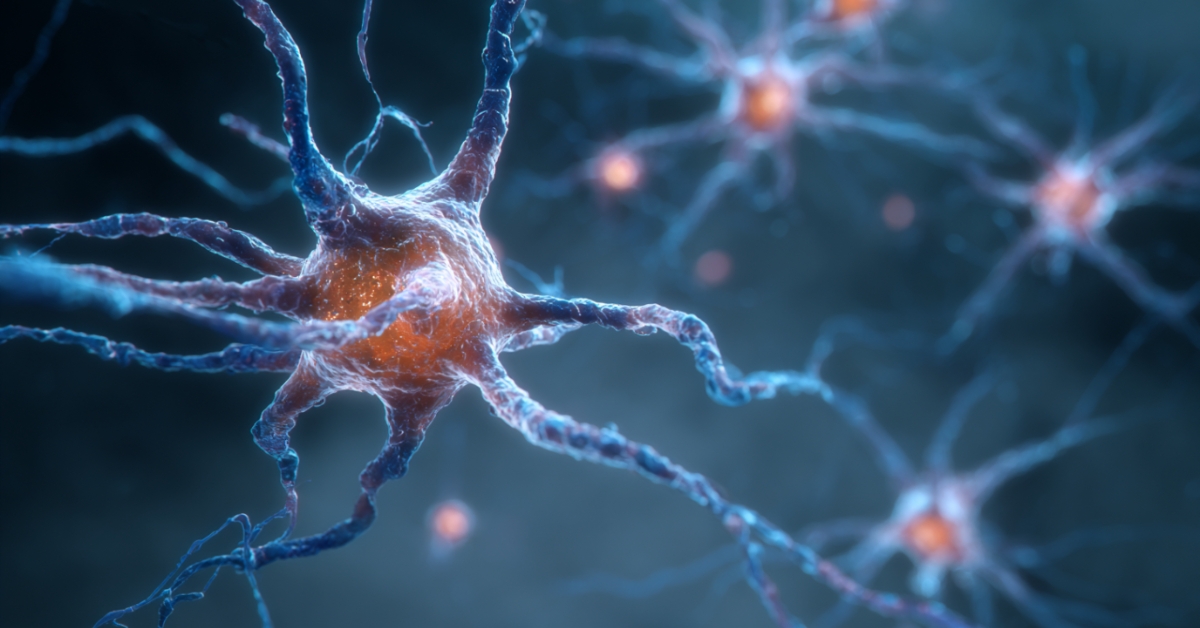Philadelphia sits in the southeastern corner of Pennsylvania state at the meeting point of the Delaware and Schuylkill rivers, about 95 miles southwest of New York City and 105 miles northeast of Baltimore.
Founded in 1682 by William Penn, the city was established to serve as the capital of the Pennsylvania Colony, which Penn had founded just a year earlier.
During the construction of Washington, D.C., Philadelphia even served as the temporary U.S. capital.
In the 19th century, it grew into one of the largest industrial cities in the Northeast, reaching a population of over 2 million.
By the late 1960s, however, Philadelphia began experiencing economic decline, with significant job losses and a shrinking population.
The number of jobs in the city dropped by around 250,000 over 25 years.
A turning point came in the late 1990s when revitalization efforts, re-urbanization, and gentrification helped address inner-city decline and population loss.
Today, Philadelphia remains Pennsylvania’s largest city but not the capital of the state, with over 1.5 million residents in the city itself and around 6 million in the Philadelphia-Camden-Wilmington metropolitan area.
It’s home to institutions like the University of Pennsylvania and cultural landmarks, including the Philadelphia Museum of Art, which holds over 227,000 objects spanning Western and Asian art from as far back as the third millennium BCE.
Known as the City of Brotherly Love (from the Greek “philos,” meaning love, and “adelphos,” meaning brother), Philadelphia has affectionately become “Philly,” a name embraced by locals and visitors alike.
Table of Contents
ToggleGeography Map of Philadelphia
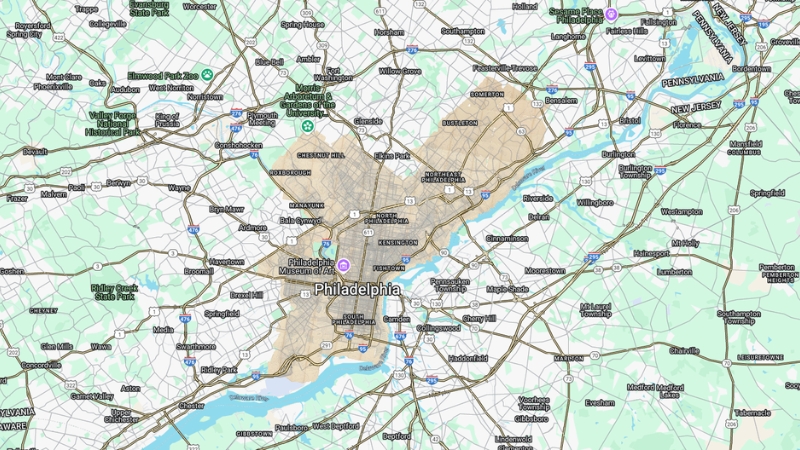
Philadelphia’s geographic center is located at approximately 40° 0′ 34″ N latitude and 75° 8′ 0″ W longitude.
The city spans 142.71 square miles (369.62 km²), with 134.18 square miles (347.52 km²) of land and 8.53 square miles (22.09 km²) of water, making up 6% of its area.
The 40th parallel north runs through Northeast, North, and West Philadelphia, including areas like Fairmount Park.
Philadelphia’s natural waterways include the Delaware and Schuylkill rivers, along with lakes and creeks in Franklin Delano Roosevelt Park, Wissahickon, Pennypack, and Cobbs. East Park Reservoir, the largest man-made water body, is also located in Fairmount Park.
The city’s elevation ranges from sea level to its highest point in Chestnut Hill at around 446 feet (136 m), near Summit Street by Germantown Avenue and Bethlehem Pike.
Positioned along the Atlantic Seaboard Fall Line, Philadelphia marks the transition between the Atlantic Plain and the Piedmont, with the Schuylkill River’s former rapids at East Falls now submerged by the dam at Fairmount Water Works.
Philadelphia serves as its own county and is bordered by Montgomery County to the northwest, Bucks County to the north and northeast, Delaware County to the southwest, and three New Jersey counties—Burlington, Camden, and Gloucester—to the east and south.
Architectural Heritage and Preservation
Independence Hall in Philadelphia, the city where it all began. #Vote 🇺🇸 pic.twitter.com/shVz6C1Szs
— Ribelle (@RibelleInPA) November 5, 2024
Architecture reflects its colonial origins, with styles ranging from Georgian structures such as Independence Hall to more modern skyscrapers, including the Comcast Technology Center.
The city is also home to a rich variety of row houses, introduced in the early 19th century and now a hallmark of its residential landscape.
The Philadelphia Historical Commission, created in 1955, is dedicated to preserving the city’s architectural and cultural heritage, maintaining a register of historic buildings and landmarks.
Climate and Environmental Conditions

Philadelphia experiences a humid subtropical climate characterized by hot, humid summers and mild to cold winters.
Precipitation is evenly distributed throughout the year, with an average annual rainfall of 44.1 inches according to gov. sources.
Snowfall can vary widely from year to year, ranging from minimal accumulation to significant snowstorms.
The city has seen notable improvements in air quality over the past two decades, with reductions in high-ozone days and particle pollution.
Parks and Green Spaces
Park Name
Address/Location
Area (acres)
Notable Features
Fairmount Park
Along the Schuylkill River
2,052
Philadelphia Zoo, historic mansions, Boathouse Row, cultural landmarks
Wissahickon Valley Park
Adjacent to Fairmount Park
2,042
Trails, Wissahickon Creek, Valley Green Inn, scenic views
Franklin Delano Roosevelt (FDR) Park
Pattison Ave & S Broad St
348
Lakes, sports facilities, American Swedish Historical Museum
Pennypack Park
NE Philadelphia, along Pennypack Creek
1,600
Trails, fishing areas, wildlife habitats
Cobbs Creek Park
West Philadelphia
851
Trails, golf courses, environmental education programs
Tacony Creek Park
N. Philadelphia, near Tacony Creek
302
Trails, Tacony Creek, wildlife watching
Bartram’s Garden
5400 Lindbergh Blvd
50
The oldest surviving botanical garden in North America, the historic Bartram House
Washington Square Park
Walnut St & S 6th St
6
Historic monuments, burial grounds, tomb of the unknown soldier from the Revolutionary War
Logan Square
Benjamin Franklin Parkway
3
Swann Memorial Fountain, central gathering area on the Parkway
Rittenhouse Square
18th St & Walnut St
6.8
Popular urban parks, historic sculptures, events, dining nearby
Philadelphia offers expansive green spaces that form an essential part of the city’s landscape.
As of 2014, Philadelphia’s total park area, encompassing municipal, state, and federal parks, spans 11,211 acres (or 17.5 square miles).
The largest of these is Fairmount Park, located along the Schuylkill River, which also includes the Philadelphia Zoo.
Fairmount Park itself covers 2,052 acres (3.2 square miles), while its adjacent Wissahickon Valley Park adds another 2,042 acres, making this combined area one of the largest contiguous urban park systems in the United States.
Fairmount Park and Wissahickon Valley Park are not only extensive green spaces but also cultural landmarks.
They contain numerous historic mansions built in Colonial Revival, Georgian, and Federal architectural styles.
Since 1972, these parks and the historic buildings within them have been recognized as a single entity on the National Register of Historic Places, emphasizing their significance to both Philadelphia’s natural and architectural heritage.
Population Map
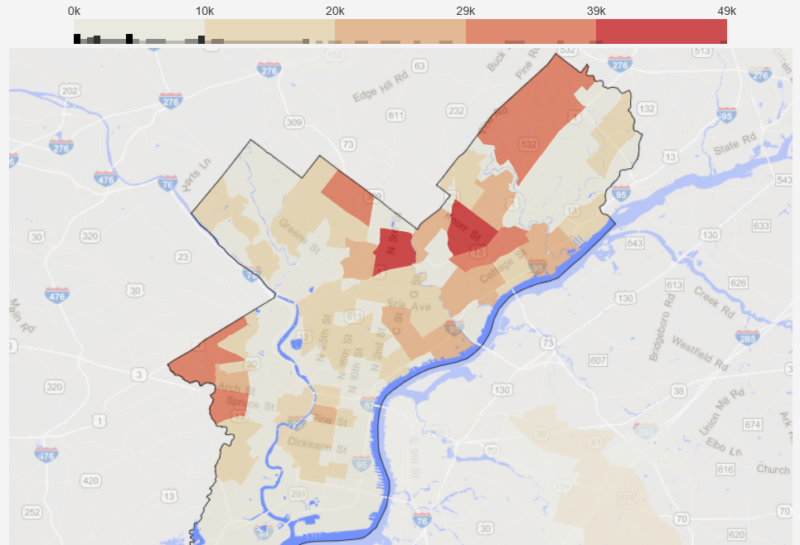
Philadelphia City, has a 2025 population of 1,533,828, marking a decline at an annual rate of -1.08% and a 4.18% decrease since the 2020 census count of 1,600,684 according to World Population Review.
The average household income in the city is $84,435, with a poverty rate of 22.72%. The median age is 34.8 years—33.5 for males and 36 for females.
As Pennsylvania’s largest city and the fifth-most populous in the U.S., Philadelphia is the only consolidated city-county in the state, housing a significant population within the larger Delaware Valley metropolitan area, which has over 6 million residents across five counties.
The city has large Italian, Irish, and Jamaican-American populations and ranks among the top U.S. cities for African-American and Jewish populations.
Approximately 10.9% of Philadelphia’s population is immigrant, with many arriving post-2000, marking a trend reminiscent of the mid-20th-century immigrant influx.
The city’s population growth, once stalled, has shown consistent increases for seven years, a change not seen since 1930-1950.
Philadelphia Racial Composition
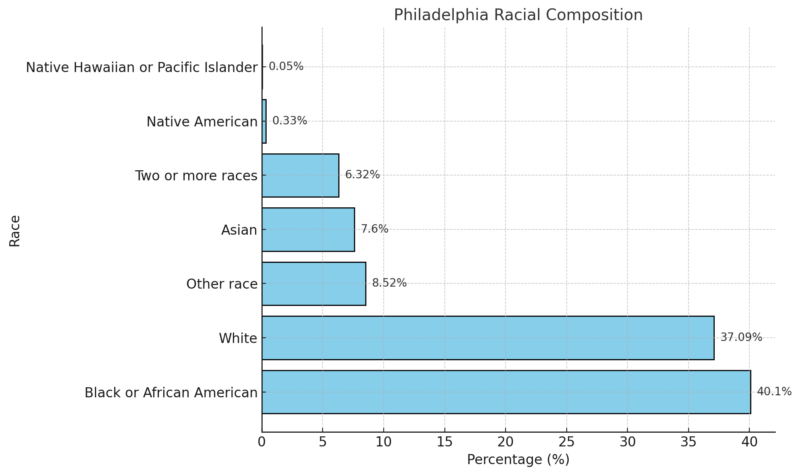
Philadelphia’s racial composition underscores its diversity, with African Americans and Whites comprising the largest groups, followed by Asian, mixed-race, and other minority communities.
Attractions of Philadelphia
LOVE Park
Located in Center City, LOVE Park is a lively plaza featuring Robert Indiana’s famous “Love” sculpture, an iconic symbol of Philadelphia. The park is a popular gathering spot and offers great views of City Hall.
Independence Hall
The birthplace of the United States, Independence Hall is where the Declaration of Independence and the Constitution were both signed. This historic building is a central part of Independence National Historical Park.
Liberty Bell
The Liberty Bell, housed in the Liberty Bell Center, is an enduring symbol of American independence and freedom. This iconic bell attracts millions of visitors and is a must-see in Philadelphia’s historic district.
Eastern State Penitentiary
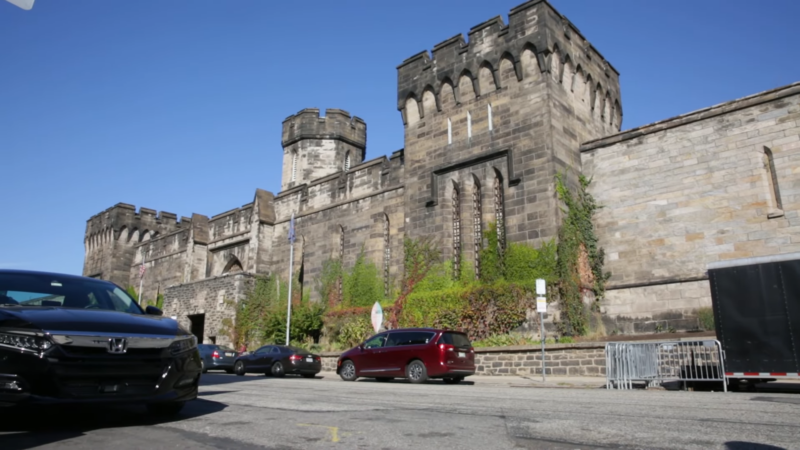
Once a revolutionary prison, Eastern State Penitentiary operated from 1829 to 1971 and housed notorious criminals like Al Capone. It’s now a museum and offers historic tours, particularly popular during Halloween.
Carpenters’ Hall
Carpenters’ Hall, built as a guild meeting hall, hosted the First Continental Congress in 1774. It’s located in the Independence National Historical Park and showcases early American craftsmanship.
Philadelphia Museum of Art
One of the largest art museums in the United States, the Philadelphia Museum of Art is home to an extensive collection of artworks from around the world. Its iconic “Rocky Steps” are a popular photo spot.
Rodin Museum
This museum houses the largest collection of works by Auguste Rodin outside of Paris, including the famous “The Thinker” sculpture. Located on Benjamin Franklin Parkway, it’s part of the Philadelphia Museum of Art’s complex.
Barnes Foundation
The Barnes Foundation holds a world-renowned collection of modern European art, including masterpieces by Renoir, Cézanne, Matisse, and Picasso. The museum is renowned for its innovative art installations and educational programs.
Pennsylvania Academy of the Fine Arts (PAFA)
PAFA is the oldest art museum and school in the United States and showcases significant American paintings, sculptures, and works on paper. Its Victorian-style museum is an architectural gem in Philadelphia.
Franklin Institute Science Museum
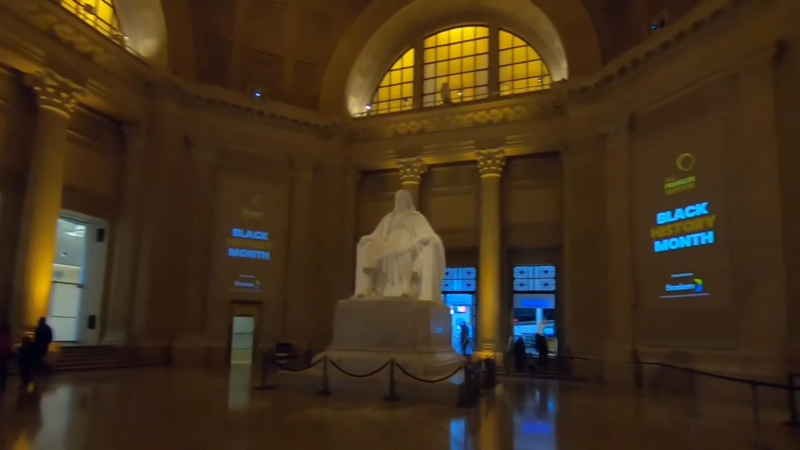
A beloved institution, the Franklin Institute offers hands-on science exhibits and an impressive planetarium. Known for its Giant Heart exhibit, it’s a favorite among families and school groups.
Academy of Natural Sciences of Drexel University
The oldest natural science museum in the Americas, the Academy of Natural Sciences features dinosaur skeletons, a butterfly exhibit, and interactive displays on the natural world.
Independence Seaport Museum
This museum celebrates Philadelphia’s maritime history, with exhibits on shipbuilding, underwater exploration, and historic vessels like the cruiser Olympia and submarine Becuna.
Mütter Museum
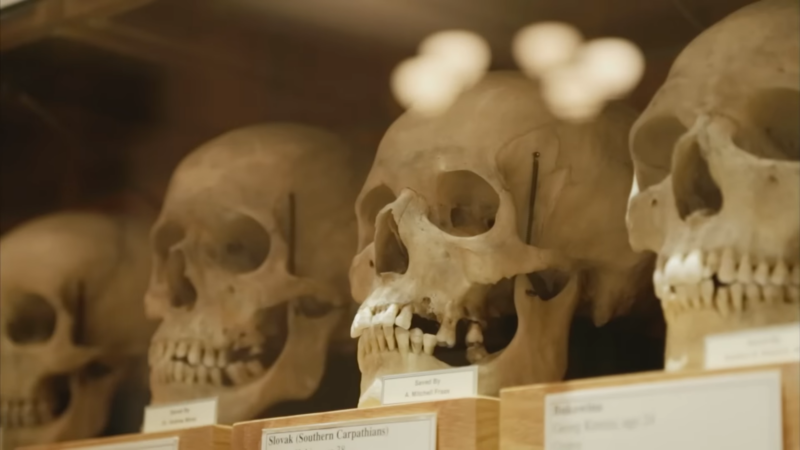
A medical museum known for its unusual and educational exhibits, the Mütter Museum includes collections of anatomical specimens, medical instruments, and oddities that explore the history of medicine.
Kimmel Center for the Performing Arts
Home to the Philadelphia Orchestra, the Kimmel Center features two major performance spaces—Verizon Hall and the Perelman Theater—and hosts ballet, theater, and music performances.
Annenberg Center for the Performing Arts
This venue offers live music, dance, theater, jazz, and world music performances, providing a diverse cultural experience in Philadelphia’s University City neighborhood.
The Mann Center
Philly really showed up for @bigtimerush and @dixiedamelio tonight! 🫶 What a show!
📸: @JordanAphoto pic.twitter.com/cMupPgt3qX
— the Mann. (@MannCenter) June 29, 2022
A seasonal outdoor amphitheater in Fairmount Park, the Mann Center hosts live performances, including concerts, theater, and dance, with stunning views of the Philadelphia skyline.
Reading Terminal Market
This historic indoor market is one of the best places in Philadelphia to sample local foods and shop for fresh produce, artisanal goods, and gourmet delicacies. It’s a favorite for both locals and visitors.
Please Touch Museum
Designed for children, the Please Touch Museum in Fairmount Park offers interactive exhibits, play areas, and learning experiences, making it one of the top destinations for families.
Franklin Square
One of the original parks designed by William Penn, Franklin Square is home to a playground, a mini-golf course, and a beautiful fountain, providing green space in Philadelphia’s urban landscape.
Fairmount Park
As one of the largest urban parks in the United States, Fairmount Park spans both sides of the Schuylkill River and includes numerous trails, historic mansions, and cultural institutions.
Shofuso Japanese House and Garden
Located in Fairmount Park, Shofuso is a serene Japanese house and garden that offers visitors a peaceful experience with koi ponds, traditional tea ceremonies, and Japanese architecture.
Philadelphia Zoo
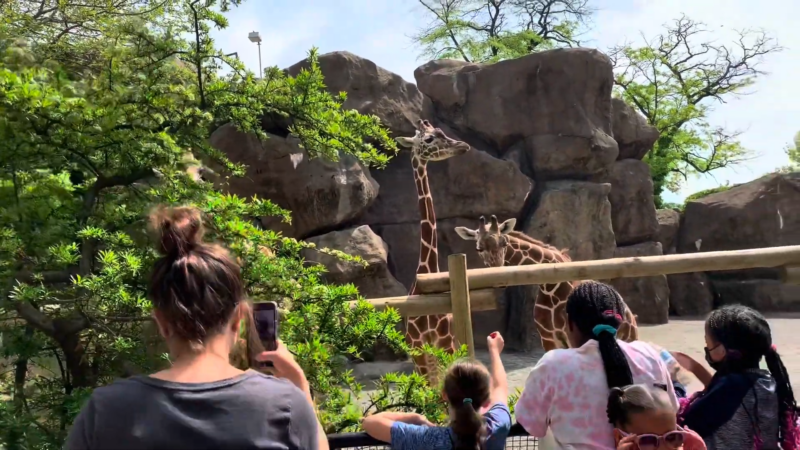
The Philadelphia Zoo, the oldest zoo in the United States, is home to over 1,300 animals and features immersive exhibits, such as Zoo360, which allows animals to move around the zoo in overhead walkways.
Wissahickon Valley Park
A scenic park with trails along Wissahickon Creek, Wissahickon Valley Park is known for its beautiful gorge, offering visitors an escape into nature within the city’s borders.
Spruce Street Harbor Park
Located along the Delaware River, this seasonal park features hammocks, food vendors, colorful lights, and games, creating a vibrant gathering spot for locals and tourists alike.
Blue Cross RiverRink
Open seasonally, the RiverRink offers an ice skating rink in winter and a roller rink in summer, as well as food and games along the waterfront. It’s a lively destination for family-friendly fun.


